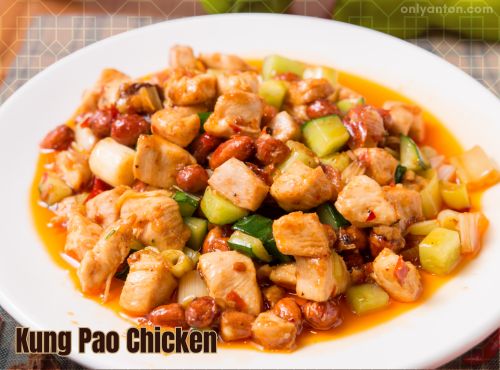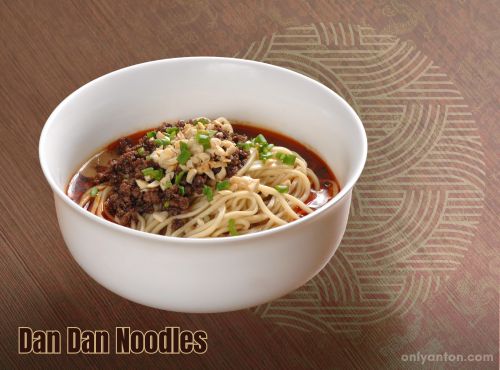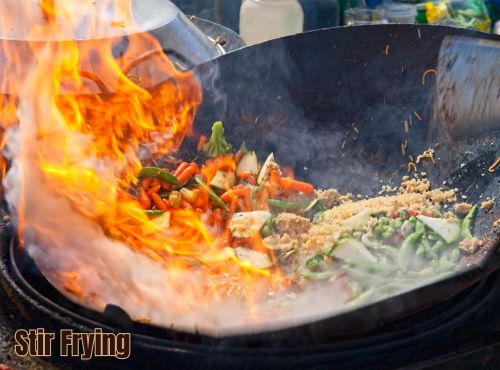Part Two of the Great Traditions of Chinese Cuisine series

Introduction
Sichuan food, celebrated as the Great Tradition of Chuan Cuisine, is a tantalizing journey into bold, unforgettable flavours. Known for its fiery chilli peppers and the signature numbing sensation of Sichuan peppercorns, this cuisine masterfully balances heat, spice, and aroma in ways that captivate food enthusiasts around the globe. The spicy and numbing ” “ma la” combination defines Sichuan food and sets it apart as one of China’s most exciting and distinctive culinary traditions.
The geographical and cultural backdrop of Sichuan province in southwestern China plays a pivotal role in shaping its cuisine. Sichuan is surrounded by mountains and blessed with fertile plains. The region’s humid subtropical climate inspires dishes designed to invigorate the senses and combat the area’s natural dampness. These unique environmental factors have given rise to an extraordinary culinary tradition that marries boldness with complexity.
This post continues the exploration of Chinese culinary heritage initiated in “Chinese Cuisine: The Eight Great Traditions.” It also ties in with themes from my previous posts, including “The Eight Great Tastes of Chinese Cuisine” and my personal journey chronicled in “Sichuan Cuisine: A Culinary Odyssey in Chengdu.”
Together, we’ll uncover the key elements, ingredients, and signature dishes that make Sichuan food a standout among China’s Eight Great Traditions.
Section I: Geographical and Cultural Context

Location and Geography
Sichuan province, often called the “Land of Abundance,” boasts a geography and climate that have significantly shaped its culinary traditions. Located in southwestern China, Sichuan is characterized by a vast basin surrounded by mountain ranges, including the Tibetan Plateau to the west. This unique topography creates fertile plains that yield a rich variety of agricultural products. Meanwhile, the basin traps heat and moisture, resulting in a humid subtropical climate. The dampness of the region has influenced the development of Sichuan cuisine’s bold and spicy flavours. Chilli peppers and Sichuan peppercorns play a crucial role in invigorating the senses and counteracting the humid environment.
Historical and Cultural Influence
Historically, Sichuan has been a hub of cultural and culinary innovation, with Chengdu and Chongqing as its most prominent cities. Chengdu, the provincial capital, is a UNESCO City of Gastronomy, reflecting its profound influence on China’s culinary landscape. Chongqing, with its distinctive style of Sichuan cuisine, has further popularized dishes like hotpot across the nation. Together, these cities have served as cultural powerhouses, driving the global spread of Sichuan food, from street markets in China to international dining tables.
Influence on Ingredients
The region’s geography and climate also dictate its key ingredients. The introduction of chilli peppers to China during the Ming dynasty found a perfect home in Sichuan, where the heat and spice complemented local flavours. Sichuan peppercorns, native to the region, add the signature numbing sensation that defines the cuisine. Additionally, fermented broad bean paste, or doubanjiang, thrives in the humid climate and imparts depth and umami to many classic dishes. These ingredients, deeply rooted in Sichuan’s environment, form the backbone of its dynamic and flavourful cuisine.
Section II: Key Flavours and Ingredients

Ma la (麻辣)
The bold and intricate flavours of Sichuan cuisine are a testament to its culinary artistry, with its hallmark combination of heat, numbing sensations, and complex layering of tastes. The iconic “ma la” (麻辣) profile is at the heart of these flavours. It is a blend of spiciness and numbing sensation that defines Sichuan food. Sichuan peppercorns, native to the region, produce a unique tingling, numbing effect on the palate. The spice enhances the dining experience and prepares the senses to better appreciate the fiery heat of chilli peppers. Together, these ingredients create a sensory interplay that is both exhilarating and addictive.


Umami and Richness
Beyond the spice, Sichuan cuisine is celebrated for its rich umami depth. This depth is achieved through the liberal use of fermented broad bean paste, or doubanjiang. Often referred to as the “soul of Sichuan cuisine,” doubanjiang imparts a savoury, earthy richness that anchors many dishes. This ingredient, when combined with staples like garlic, ginger, and soy sauce, builds a foundation of bold and satisfying flavours.

Cooking Oils
Cooking oils also play a pivotal role in Sichuan cuisine. Chilli oil, infused with dried chilli peppers, adds an extra layer of heat and aroma. Peanut oil lends a smooth, nutty flavour. Chefs use these oils generously to enhance the texture and the depth of flavour in dishes.
Complex Layering of Flavours
However, its mastery of complex layering truly sets Sichuan cuisine apart. Heat and spice are balanced with sour, sweet, and savoury elements to create a dynamic flavour profile that is both bold and harmonious. A dish might juxtapose the sharp tang of vinegar with the sweetness of sugar. Alternatively, chefs might pair the numbing heat of peppercorns with the richness of soy sauce. This intricate balance ensures that every bite is a symphony of flavours, making Sichuan cuisine unforgettable.
Section III: Signature Dishes
Sichuan’s iconic dishes exemplify the cuisine’s bold flavours and intricate techniques. These culinary offerings each showcase the region’s unique culinary identity. The dishes highlight the spicy, numbing, and savoury elements that have made Sichuan food a beloved tradition worldwide.

Mapo Tofu (麻婆豆腐)
Mapo Tofu is a quintessential Sichuan dish that perfectly embodies the “ma la” (spicy and numbing) flavour profile. This dish features silky tofu cubes simmered in a vibrant, spicy sauce made from doubanjiang (fermented broad bean paste), minced pork, and Sichuan peppercorns. The result is a complex balance of flavours: the fiery heat of chilli oil, the savoury depth of garlic and ginger, and the tingling numbness of peppercorns. Green onions often garnish the dish. This combination of ingredients make mapo tofu as visually striking as it is delicious—a true staple of Sichuan cuisine.

Kung Pao Chicken (宫保鸡丁)
One of the most internationally recognized Sichuan dishes is Kung Pao Chicken (gong bao ji ding). This Sichuan classic combines tender stir-fried chicken with peanuts, dried chilli peppers, and a tangy-sweet sauce. The magic of this dish lies in the contrast between the sauce’s sweetness and the chillies’ heat, creating a bold and harmonious balance. Though often adapted outside of China, the authentic Sichuan version retains the complexity of flavours and the signature numbing heat of Sichuan peppercorns.

Sichuan Hotpot (火锅)
Dining on Sichuan Hotpot is an immersive culinary experience. This communal meal features a bubbling cauldron of spicy broth infused with chilli peppers, Sichuan peppercorns, and aromatic spices. Diners select from an assortment of meats, vegetables, tofu, and noodles to cook directly in the pot. The fiery broth and the numbing sensation of peppercorns create a thrilling sensory journey. Sichuan Hotpot is as much about the social ritual as the bold, hearty flavours.

Dan Dan Noodles (担担面)
Originating as a humble street food, Dan Dan Noodles epitomize the bold flavours of Sichuan cuisine. Thin wheat noodles are served with a spicy sauce made from chilli oil, doubanjiang, and minced pork. Green onions and crushed peanuts customarily top the noodles. The dish’s rich, savoury sauce, paired with the heat of chilli and the umami of fermented ingredients, makes every bite a powerful flavour explosion.
These signature dishes showcase the dynamic flavours of Sichuan cuisine. The region’s ability to combine boldness with complexity make it a cornerstone of Chinese culinary tradition.
Section IV: Cooking Techniques
An array of cooking techniques bring the rich and diverse flavours of Sichuan cuisine to life. These methods emphasize both speed and precision, as well as the careful layering of flavours. From the sizzling intensity of stir-frying to the slow, flavourful development of braising, these methods highlight the ingenuity and depth of Sichuan culinary traditions.

Stir-frying
A foundation of Sichuan cooking is stir-frying. This coking method allows for the quick preparation of dishes while preserving the vibrant flavours and textures of the ingredients. The technique often begins with heating chilli or peanut oil in a wok. Garlic, ginger, and dried chillies soon follow in order to release their aroma. Chefs will then add ingredients like meat, tofu, or vegetables to ensure they are evenly coated with the bold, spicy sauces characteristic of Sichuan cuisine. The high heat and rapid movement create flavourful and visually appealing dishes, such as the popular Kung Pao Chicken.


Steaming and Braising
The techniques of steaming and braising are essential for dishes requiring a deeper, more intense flavour. Steaming preserves the natural flavours and moisture of ingredients. Bold sauces often accompany steamed dishes, like steamed fish with chilli sauce. Braising, conversely, involves slow-cooking ingredients in a rich, flavourful liquid infused with spices, chilli peppers, and doubanjiang. This method creates hearty, tender dishes like braised beef with chilli. The prolonged cooking time allows the flavours to develop and meld together fully.

Dry-Frying (干煸)
Dry-frying is a distinctive Sichuan technique that intensifies flavours by frying ingredients in hot oil without adding moisture. This method produces a crispy texture while concentrating the ingredients’ natural flavours. A prime example is Dry-Fried Green Beans (gan bian dou jiao). Green beans are fried with minced pork, garlic, and preserved vegetables, resulting in a crunchy and richly flavoured dish. The absence of additional liquid ensures a bold, concentrated taste that is uniquely Sichuan.
These techniques, rooted in Sichuan’s culinary traditions, are key to creating the dynamic, complex dishes that have made this cuisine a global favourite.
Section V: Culinary Influence and Modern Popularity
Global Influence
Sichuan cuisine’s bold and complex flavours have made it one of the world’s most recognizable Chinese food styles. Hallmark dishes like Kung Pao Chicken and Sichuan Hotpot are now staples in Chinese restaurants across the globe. The distinctive “ma la” sensation—spicy and numbing—has captured the imagination of food enthusiasts, earning Sichuan cuisine a devoted following far beyond its regional borders. Whether served in traditional Chinese eateries or reimagined in global kitchens, Sichuan cuisine continues to captivate diners with its intensity, depth, and unforgettable flavours.
Innovation in Modern Sichuan Cuisine
In recent years, innovation has propelled Sichuan cuisine into the culinary spotlight. Chefs in China and abroad are reimagining classic recipes, using time-honoured techniques to create contemporary dishes that blend Sichuan flavours with modern dining trends. Upscale restaurants are offering refined takes on traditional favourites, such as deconstructed Mapo Tofu or Hotpot-inspired small plates. These creative interpretations honour Sichuan’s culinary heritage while introducing its bold flavours to new and diverse audiences.
Fusion Cuisine
The rise of Sichuan-inspired fusion cuisine has further enhanced its global appeal, blending the bold “ma la” flavour profile with international culinary formats. Chefs and restaurants around the world are reimagining Sichuan flavours in ways that surprise and delight diners.

One standout example is Fly By Jing, a project by Shanghai-based chef Jenny Gao. Known for her creative takes on Sichuan cuisine, Gao’s recipes include a Mapo Tofu Pizza—a sourdough crust topped with vegan Mapo Tofu and Buffalo Mozzarella. Other inspired dishes include bagel sandwiches stuffed with Sichuan pulled pork, Emmenthal, and chilli mayo, or sliders featuring Lazi-spiced fried chicken with slaw.
At The Point, a popular restaurant in Causeway Bay, Hong Kong, Sichuan flavours take center stage in fusion pizzas. Their stone-baked Sichuan Boiled Wagyu Beef Pizza combines dried chilli peppers, chilli oil, and mozzarella for a dish that marries heat and creaminess. Another highlight is their Sichuan Shredded Chicken Pizza, complete with a tongue-numbing spicy sauce that embodies the boldness of Sichuan cuisine.
This wave of fusion cuisine showcases how Sichuan flavours transcend cultural boundaries, marrying traditional techniques with contemporary global trends. Such innovations celebrate the unique essence of Sichuan cuisine while inviting a broader audience to experience its dynamic, unforgettable flavours.
Conclusion
Sichuan cuisine, with its bold flavours, distinctive “ma la” sensation, and intricate layering of taste, stands as a shining example of Chinese culinary mastery. Its hallmark use of chilli peppers, Sichuan peppercorns, and fermented broad bean paste creates a dynamic flavour profile that excites the palate and leaves a lasting impression. From iconic dishes like Mapo Tofu and Kung Pao Chicken to the immersive experience of Sichuan Hotpot, this cuisine is a sensory journey that balances tradition with modern innovation.
The next post in the Great Traditions of Chinese Cuisine series will explore “Shandong Food: The Great Tradition of Lu Cuisine.” Shandong cuisine, known for its fresh and aromatic flavours, has long been celebrated for its imperial roots and seafood-based dishes. Stay tuned for a deep dive into this elegant culinary tradition.
What About You?
Have you tried Sichuan food before? What are your favourite dishes, or which flavours intrigue you most? Share your experiences in the comments below—I’d love to hear your thoughts!
For a more personal exploration of Sichuan cuisine, check out my earlier blog post, “Sichuan Cuisine: A Culinary Odyssey in Chengdu,” where I share my journey through the heart of Sichuan’s culinary landscape. Let’s keep the conversation going and celebrate the vibrant world of Sichuan food together!
Further Reading and Resources
Related Posts on the Only Anton Blog
- Chinese Cuisine: The Eight Great Traditions: Discover the Eight Great Traditions of Chinese cuisine, from Anhui to Zhejiang, and gain insight into the rich diversity of China’s regional food cultures.
- The Eight Great Tastes of Chinese Cuisine: A deeper look at the key flavour profiles that define Chinese cuisine and their influence on the Eight Great Traditions.
- Sichuan Cuisine: A Culinary Odyssey in Chengdu: My personal journey through the heart of Sichuan, exploring the region’s flavours, techniques, and iconic dishes.
External Resources
For readers who want to explore Sichuan cuisine and Chinese culinary traditions more, the following resources provide a mix of personal insights, historical context, and practical knowledge to deepen your understanding of Sichuan cuisine and its global impact.
Books
- Land of Plenty: A Treasury of Authentic Sichuan Cooking by Fuchsia Dunlop: A comprehensive guide to authentic Sichuan recipes and culinary traditions, written by one of the foremost experts on Chinese cooking. Look it up at a local library, browse online, or buy your copy here.
- The Food of Sichuan by Fuchsia Dunlop: An updated and expanded exploration of Sichuan cuisine with insights into its history, culture, and iconic dishes. Check your local library, search online, or order a copy right here.
- Sharks’ Fin and Sichuan Pepper: A Sweet-Sour Memoir of Eating in China by Fuchsia Dunlop: This engaging memoir captures Fuchsia Dunlop’s culinary journey through China, with insights into Sichuan cuisine and beyond. Find it at your library, browse online, or grab your own copy here.
Articles and Websites
- UNESCO Creative Cities Network – Chengdu Gastronomy: Learn more about Chengdu’s recognition as a UNESCO City of Gastronomy and its role in promoting Sichuan cuisine globally.
- Wikipedia, “Sichuan Cuisine”: An overview of the characteristics of Sichuan cuisine. Learn more about it here.
- “Sichuan Cuisine: The Most Popular Cuisine in China,” China Highlights: An article discussing the history, ingredients, and signature dishes of Sichuan food. Find the article here.
- “What Are Sichuan Peppercorns?” by Chala June, Bon Appétit (Sept. 29, 2021): An article that describes this essential element of Sichuan cuisine. Read it here.
- “More Than Málà: A Deeper Introduction to Sichuan Cuisine” by Joe Distefano, Serious Eats (January 2020): A detailed guide to Sichuan ingredients, techniques, and recipes. Read the article here.




